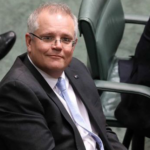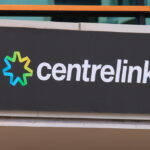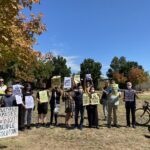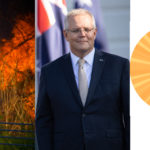Federal Government: Get Your Priorities Right!

Welcome to Australia 2021, once known as ‘the lucky country’, where the federal government is spending tens of billions of taxpayer dollars on nuclear-powered submarines in an effort to impress the US and UK, and act as a regional police force, while ignoring important social justice issues such as the needs of the hundreds of thousands living below the poverty line.
Perhaps the most vulnerable group in our society are those sleeping rough, in respect of which new research by the University of New South Wales paints a bleak picture.
Homeless ignored
While it is difficult to get numbers that paint the full picture, because unlike in many other countries there is no official national register of homeless deaths in Australia, research suggests that homeless people are losing their lives in a range of ways and those sleeping rough face a dire future with limited assistance and support systems.
A newly-released research by the UNSW reveals that homeless people in inner Sydney have death rates three to four times higher than people in the general population of New South Wales.
Alarmingly, death rates are highest amongst younger people. Other bodies of research suggest that the average age of death of homeless people is usually around 40-50 years — lives lost, when they’re only half-lived.
Homelessness has been on the rise in Australia for many years and little has been done by successive governments to deal with the problem, which has only been exacerbated by the Covid-19 pandemic.
Forty-Four homeless people have died in WA in 2021
Despite not having severe outbreaks such as those experienced by New South Wales and Victoria, Western Australia has a significant and growing problem. Forty-four people known to homelessness services have died on Perth streets since the start of this year. Figures estimate that at least 30 people died on the streets last year.
About a third of those who died in WA this year identified as Aboriginal or Torres Strait Islander, and about 30 of the 44 were known to have no fixed address and had been sleeping rough when they died. Researchers are still trying to determine the causes of deaths and some cases have been referred to the Coroner.
Statistics suggest that rates of suicide are high amongst the homeless, but that can also be because the people who do suffer from chronic homelessness often have complex needs relating to health, mental health, disabilities, abuse and addiction.
Health-wise, this is a particularly vulnerable group who, amongst other things, are malnourished and sleep deprived. In Sydney this year, a successful joint initiative between the St Vincent de Paul Society, St Vincent’s hospital, the Kirketon Road Centre and the City of Sydney made vaccinations to the homeless, in an effort to protect them from Covid-19.
At the height of the Delta outbreak this year, the NSW Government committed $22.3 million, investing in outreach services and also paying for hotel accommodation. During this period many homeless people actually reported that they felt a sense of hope having somewhere safe to sleep and keep their belongings. Many finally had the headspace (rather than just having to use their survival instincts) to consider planning a future.
The tragedy is that this solution is only temporary, not long-term.
Homelessness is no longer just an affliction of the mentally ill and marginalised
While a significant number of Indigenous people do suffer homelessness, the profile of homeless people is changing. Many people, from all backgrounds, have found themselves couch surfing, living in tents, or living in their cars this year as a result of Covid-19-related job losses, family break-ups and border closures.
And while the economy struggles to regain strength, the problem is only likely to get much worse. The highest risk group of homelessness is middle-aged women and single mothers, many of whom end up facing homelessness because they’ve been victims of domestic violence and have nowhere else to go.
The Federal Government has long been criticised for the paltry amount provided by JobSeeker and other allowances, which barely cover rent, let alone the full suite of living expenses, but the issue is much more complex than that. There is a significant shortage of affordable social housing too. Crisis shelters and services are stretched, and in some cases homeless people are targeted by police, often ending up with fines they can’t afford, or facing the justice system.
Figures reported earlier this year showed that 51,000 people are on the public housing waiting list in NSW, including 5,308 in priority groups.
The Australian Bureau of Statistics counts nearly 117,000 Australians in some form of homelessness, with more than an estimated 7,000 living on the streets.
Hundreds of thousands of people living in poverty
But those working directly at a grass-roots level say the problem is more likely to be double the reported figures, simply because the homeless know how to be ‘invisible’ on the streets, away from authorities.
In New South Wales, the experts suggest there are almost as many people sleeping rough in regional areas as there are in Sydney. And one of the biggest problem areas is around the popular tourist destination, Byron Bay in far northern New South Wales.
In Queensland, a recent study showed that only 44 rentals across the country were affordable for a single parent and that about 600,000 Queenslanders were living in poverty, which is often the tipping point for homelessness. People’s savings have been depleted to nothing, parents are skipping meals to ensure kids are fed. Needless to say, the stress of such circumstances places immense pressure on relationships and wellbeing.
Many people who experience homelessness are not ‘unemployable’. In fact, a very large number of these people have skills and experience and want to make a contribution to society, but that is impossible to do when you have ‘no fixed’ abode, no stability, no savings, little money to get by, an unreliable phone connection and no internet.
Shadow pandemic
Covid-19 has been a great distraction for our politicians, and while yes, they have had a health crisis to deal with, many social problems have been completely overlooked.
Many would attest that the solution to the pandemic — lockdowns in particular — which have created job insecurity and put enormous financial and emotional burdens on people, have created a number of very severe ‘shadow’ pandemics in homelessness, domestic violence and mental health which desperately need to be addressed.







